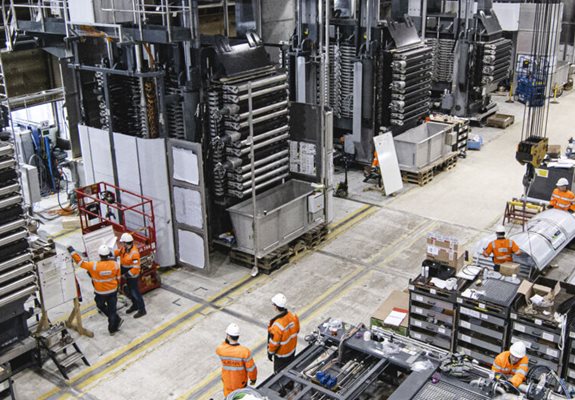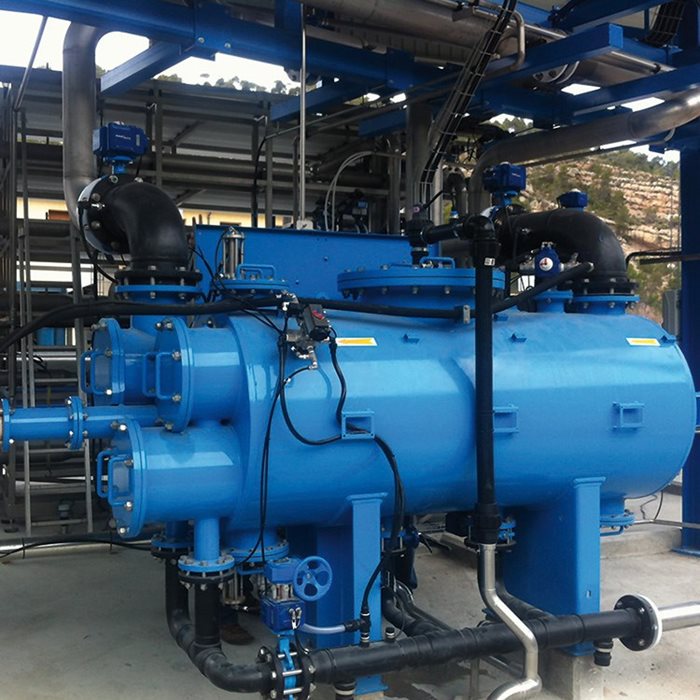The filtering process
Dirt particles are removed as water flows through multi-layered microfiber cassettes. These cassettes are attached to collector pipes that allow the process water to flow from the filter outlet. Dirt particles that accumulate on and between the microfiber layers create a pressure differential – when this either reaches a preset value or a specified time interval has elapsed, the control unit activates the self-cleaning cycle.
The self-cleaning process
The inlet and outlet valves close and the drain valve opens. After the filter vessel empties, the booster pump delivers pressurized water to the shuttle pipe on which the flush nozzles are mounted. These nozzles straddle the cassettes and spray both sides with high-powered jets that penetrate the microfiber layers. When the jets hit the plastic cassette support they reflect outward, dislodging the debris from the surface and forcing it down the drain. This process ensures 100% effective cleaning.
The piston assembly shuttles the spray nozzles across a single row of cassettes on each stroke. When the nozzles reach the end of a row, the turning mechanism shifts the filter package to the next row of cassettes. The piston then shuttles in the opposite direction, cleaning the cassettes as the nozzles traverse them.
The filter is clean after all 35 rows of cassettes have been cleaned with water jets. The drain valve closes and the inlet valve opens, filling the filter vessel. After the vessel is full, a filter-to-waste valve opens. This eliminates any residual contaminant that may have entered the collector pipes during the flushing process. The filter-to-waste valve then closes, the outlet valve opens, and the filter is back on-line.


